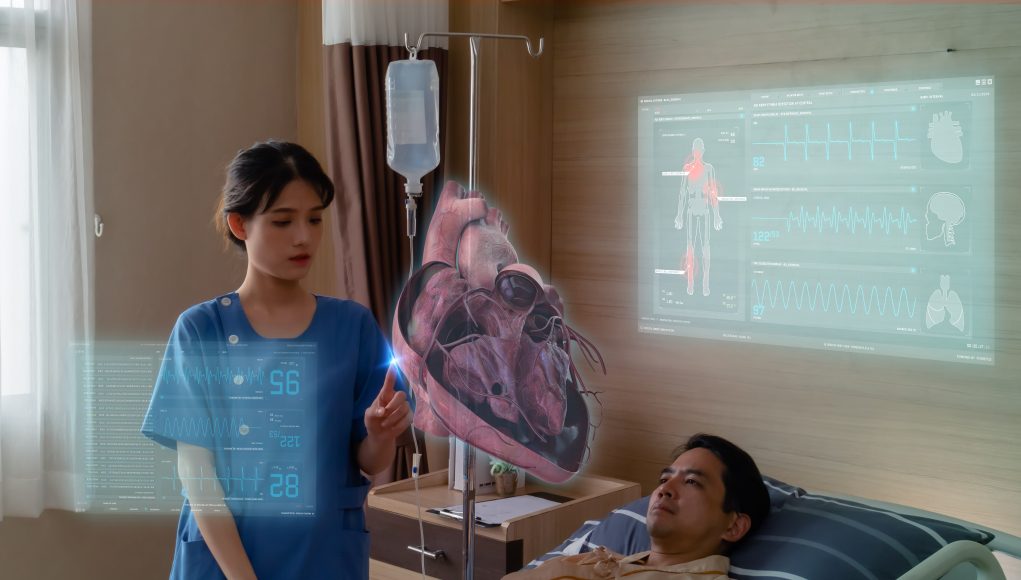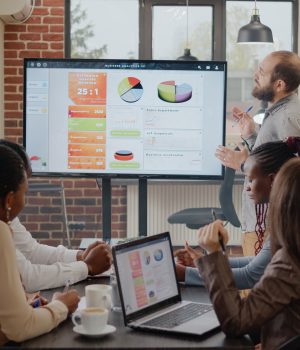Why is sustainable growth more than just innovation?
Growth is essential for any organization. But not just any growth – sustainable growth. That means balancing innovation, efficiency, and resilience. It requires more than reacting to change—it demands the ability to anticipate it.
When I talk about embracing disruption, I don’t mean passively accepting it. I mean becoming the disruptor – leveraging advancements in technology, efficiency, and big data to:
- Predict challenges before they arise
- Optimize operations with precision
- Innovate with certainty
The question is: How do you plan for the future when uncertainty seems inevitable? While some aspects of the future are unknown, others are completely predictable.
What can you be certain about in an uncertain future?
In my Anticipatory Organization® Model, I teach businesses how to identify Hard Trends – future certainties that allow organizations to pre-solve problems and seize opportunities.
One such Hard Trend revolutionizing industries today? Digital twin technology.
What are digital twins and why do they matter?
For years, businesses relied on static models and projections – methods that failed to fully capture real-world complexities. But what if you could test solutions before committing resources? What if you could foresee and prevent failures before they happen?
That’s exactly what digital twins enable.
How do digital twins work?
A digital twin is a virtual model of a real-world object, system, or process. It collects real-time data using IoT sensors, AI, and predictive analytics to provide a dynamic, evolving representation of its physical counterpart.
Here’s an example: A wind turbine with IoT sensors can feed data to its digital twin, tracking:
- Blade rotation speed
- Vibration levels
- Energy output
By analizing this data, operators can:
- Predict maintenance needs before breakdowns occur
- Optimize turbine performance based on wind conditions
- Reduce downtime and operational costs
Digital twins don’t just mirror reality – they shape it. They enable companies to make data-driven decisions, anticipate disruptions, and accelerate innovation.
How do digital twins provide a competitive edge?
- Real-Time Monitoring
Businesses gain continuous visibility into system performance, detecting inefficiencies before they become costly issues.
- Simulation & Testing
Companies can test new strategies in a risk-free environment before implementing them in the real world.
- Predictive Analytics
Machine learning algorithms forecast failures and suggest proactive solutions, preventing costly downtime.
Unlike traditional simulations, digital twins evolve over time, providing valuable insights at every stage of a product’s lifecycle.
How do digital twins align with Anticipatory thinking?
If you’ve followed my Anticipatory Organization® Methodology, you know that success comes from identifying Hard Trends and using them to stay ahead of disruption.
Digital twins give organizations a tangible way to apply this methodology:
- Hard Trend Principle: The integration of IoT, AI, and real-time analytics is accelerating—making digital twins an inevitable part of the future.
- Pre-Solve Problems: Simulating failures before they occur allows companies to fix issues before they disrupt operations.
- Proactive Decision-Making: Digital twins help businesses forecast industry shifts and respond before competitors.
With the right strategy, digital twins turn uncertainty into opportunity.
Where are digital twins making the biggest impact?
- Manufacturing – How are smart factories redefining production?
- BMW uses digital twins to optimize production lines, reducing waste and improving efficiency.
- Rolls-Royce uses them to predict aircraft engine failures, saving billions in unplanned maintenance costs.
- Healthcare – Can digital twins improve patient care?
- Virtual heart models help doctors personalize treatments and reduce surgical risks.
- Wearable devices track patient health in real time, allowing for faster diagnostics and interventions.
- Smart Cities – How are digital twins shaping urban development?
- Shanghai’s digital twin models over 100,000 urban elements, optimizing traffic, waste management, and disaster response.
- Singapore uses digital twins to monitor energy consumption and reduce waste, advancing sustainability efforts.
- Energy Sector – Can digital twins enhance efficiency?
- BP uses them to monitor offshore oil rigs, reducing safety risks.
- Wind farms use digital twins to adjust turbine angles in real-time, maximizing energy production.
No matter the industry, digital twins are reshaping the way organizations operate, innovate, and grow.
Why are digital twins the future of predictive analytics?
The true power of digital twins lies in their ability to work alongside predictive analytics – a combination that is redefining business intelligence.
What can be predicted with this technology?
- Failures Before They Happen – By detecting anomalies that humans might miss
- Future Demand – Retailers use digital twins to forecast consumer behavior
- Market Trends – Organizations test “what-if” scenarios before making big decisions
This capability is transforming industries as significantly as the Industrial Revolution once did.
What challenges must be overcome?
While digital twins offer massive potential, implementation comes with challenges.
Let’s discuss another important aspect – Soft Trends.
Soft Trends are future maybes – things that can be influenced. The biggest Soft Trends affecting digital twins include:
- Data Privacy Concerns – Organizations must ensure cybersecurity as digital ecosystems grow.
- High Integration Costs – While upfront investment is high, cloud-based platforms are lowering barriers.
- Talent Shortages – Companies must train employees to manage and interpret digital twin data.
The good news? These are changeable trends—meaning businesses can take action to address them now.
What’s next for digital twins?
The future of digital twins is evolving rapidly, driven by AI, 5G, and quantum computing.
Here’s what’s on the horizon:
- Self-Learning Twins – AI-driven digital twins will autonomously adapt to real-world changes.
- Global Collaboration – Industries will share digital twin insights to accelerate innovation.
- Personalized AI Models – Retail and healthcare will create individualized digital twin experiences.
The pace of digital twin adoption is accelerating – will your organization keep up?
It’s time to leverage digital twins for future growth
Digital twins aren’t just a new tool – they’re a strategic advantage.
By leveraging Hard Trends and anticipatory strategies, organizations can move beyond reactionary decision-making and take proactive control of the future.
The real question isn’t if digital twins will transform industries – it’s:
How will you use them to transform your own?
Want to stay ahead of the curve?
Digital twins are just one of the top tech trends shaping the future.
Download My Top 25 Tech Trends Predictions Report to discover more game-changing innovations.
Stay ahead. Anticipate disruption. Lead with certainty.
For more life-changing opportunities and tips on entrepreneurship and finance, subscribe to our weekly newsletter and follow us on X, Facebook, Instagram, and LinkedIn.







![The 15 best finance websites you should bookmark right now [2025 Edition] alphagamma The 15 best finance websites you should bookmark right now [2025 Edition] entrepreneurship finance opportunities](https://agcdn-1d97e.kxcdn.com/wp-content/uploads/2024/09/alphagamma-The-15-best-finance-websites-you-should-bookmark-right-now-2025-Edition-entrepreneurship-finance-opportunities-300x350.jpg)